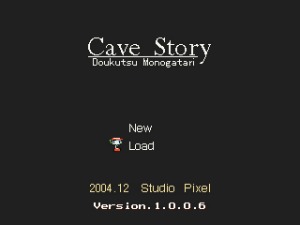 A million units in sales will not cut it. As a matter of fact, there’s a very good chance that two million won’t cut it either. Costs associated with developing packaged products of a nature which the mass market perceives as top-tier, triple-A games for high-end consoles (PlayStation 3, Xbox 360, PC) now force publishers into betting their budgets (and business) on titles ‘calculated’ to sell in the ballpark of 3 to 5 million units. We won’t belabor the point here, but those seeking evidence need only backtrack through the list of studio closures, mergers, buyouts, and layoffs over the past several years.
A million units in sales will not cut it. As a matter of fact, there’s a very good chance that two million won’t cut it either. Costs associated with developing packaged products of a nature which the mass market perceives as top-tier, triple-A games for high-end consoles (PlayStation 3, Xbox 360, PC) now force publishers into betting their budgets (and business) on titles ‘calculated’ to sell in the ballpark of 3 to 5 million units. We won’t belabor the point here, but those seeking evidence need only backtrack through the list of studio closures, mergers, buyouts, and layoffs over the past several years.
Somewhat a microcosm of large economies and the societies supporting them, the middle-ground, where most of the population exists, in theory ought to exist rather comfortably thanks to a reasonable amount of flexibility, however this group is shrinking, as we now see a greater percentage of the population is being forced gradually towards the socioeconomic poles. This very pattern is being reflected in the games industry as well.
In the ecosystem outlined above that the games industry has gradually managed to cultivate over the past few decades, many game creators nowadays merely long for the opportunity to experiment and make the games that they want to make, and to be able to continue doing just that for well into the future – a seemingly simple enough request, though reality isn’t quite so kind and accommodating.
Thankfully, as with artistic mediums and forms of entertainment that have come before, the generation of do-it-yourselfers appear to now be the ones best positioned to expand and diversify the games industry, and in turn, help make the above ‘dream’ a reality.
The fact that the independent game developer may prove to be the most volatile catalyst in the expansion of the ‘middle’ market, likely contributing more original game concepts and new iterations on existing business models than other segments of the market while still managing to be sustainable, in some ways should come as no surprise. As we’ve seen with music and film in the past, as the financial and technical barriers lower, the tools needed in order to create become more accessible to those with interest in the art form, meaning that the passionate, proactive individual all of a sudden has all that she needs in order to make a contribution to the medium. For the already skilled artisan or technician, this environment means greater efficiency, flexibility, and lower cost.
Spurring this movement, the rapid increase in development costs and accompanied risk in the mainstream industry has inspired a good number of industry veterans to go independent, moving the business side forward while at the same time returning game development to team sizes and development schedules of eras past. The concept of the artisan or auteur handcrafting something personal is returning to the game space, this time in an era flourishing with tools allowing for easy information sharing and self-publishing.
Instead of fleeing to the smartphone and free-to-play market in search of solace from the economical risk of big game development, it’s now more than possible for an ambitious team or individual to make use of these devices in tactful ways which allow game developers to create something new and compelling, invest their energy in creations that are entirely their own, and gradually get their masterpiece into the hands of a more diverse population of players.
While Western developers have largely managed to spearhead this movement in recent years, Japan is in a position to stay in the game. Nearly 7 years following its initial release, the presentation on indie super-hit Cave Story by developer Daisuke Amaya (aka Pixel) at this year’s Game Developers Conference in San Francisco gathered massive industry attention. The game, which began life as a freeware PC title, in 2010 saw an enhanced WiiWare release in collaboration developer Nicalis, and is scheduled for another reworking for the Nintendo 3DS in 2011 thanks to publisher and developer Nippon-Ichi Software. Publisher Rockin’ Android is hard at work bringing high-quality Japan-developed indie titles to the PlayStation Network, and the release of Japanese indie, Recettear: An Item Shop’s Tale, via game distribution powerhouse Steam, has demonstrated that through new distribution methods and business strategies, titles with very limited markets in their home country of Japan have room to expand into realms of profitability in other regions of the globe.
The year 2010 could go down as the “Year of the Indies” in the West. With some careful planning and a bit of experimentation, there’s no reason that 2011 can’t be the year that Japan steps up to claim a hefty stake in this new frontier for themselves.


Comments
Seems like such a great chance for Japan to do what it does best! A little less “Hollywood”, a lot more Awesome!